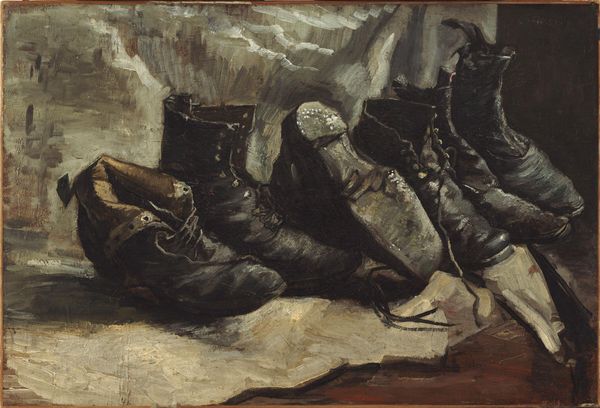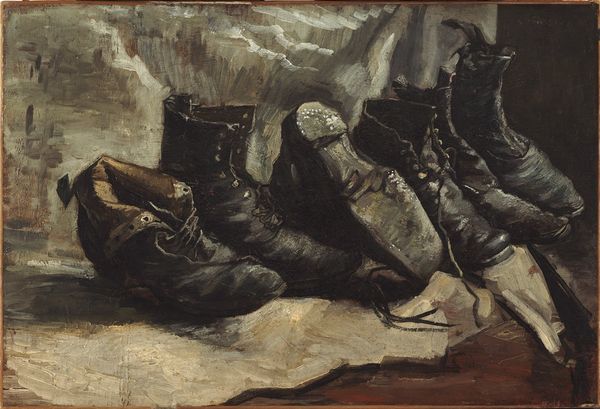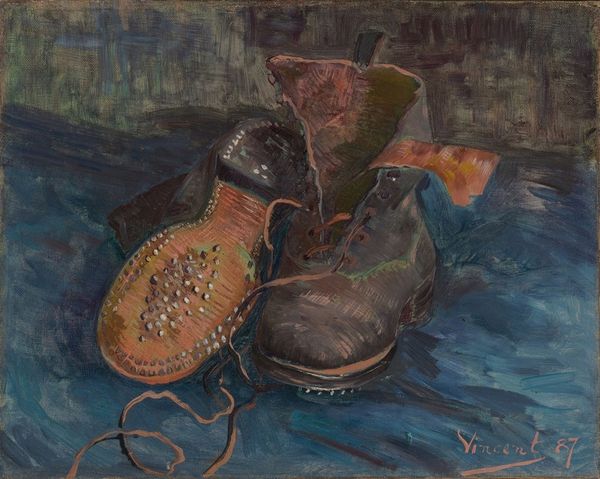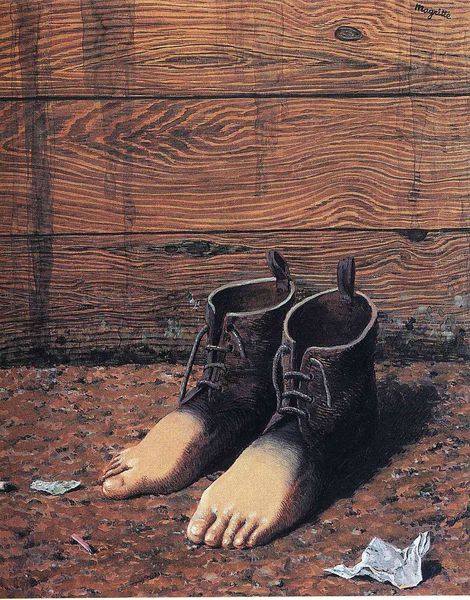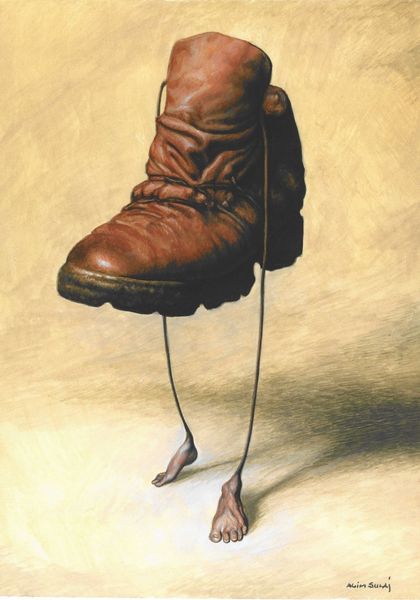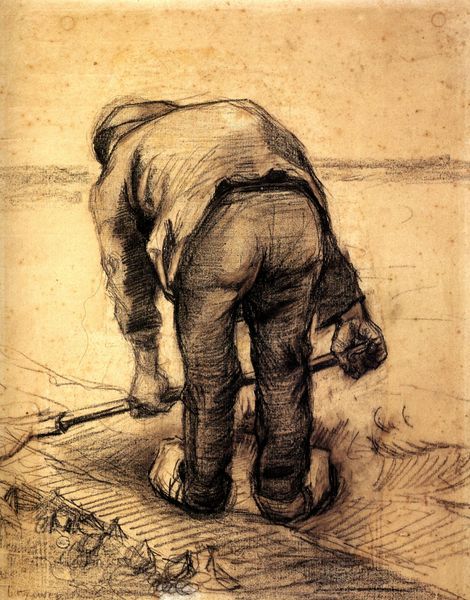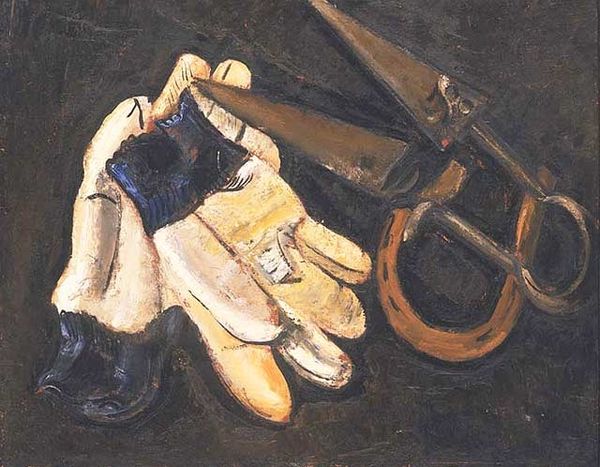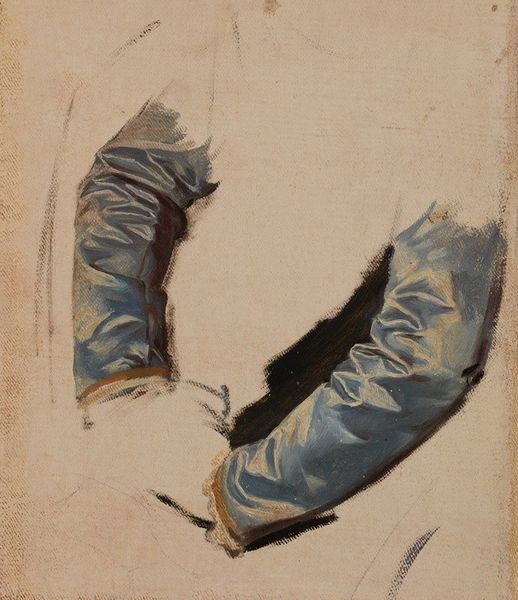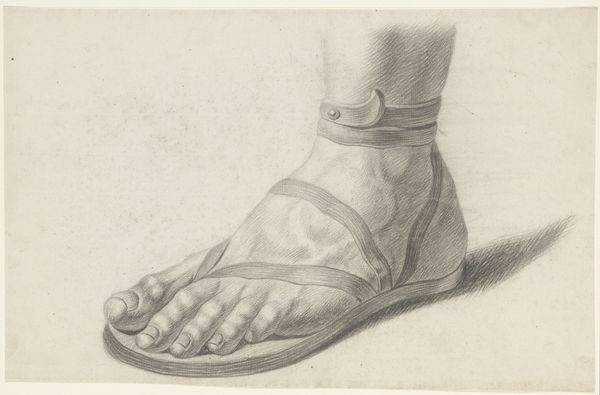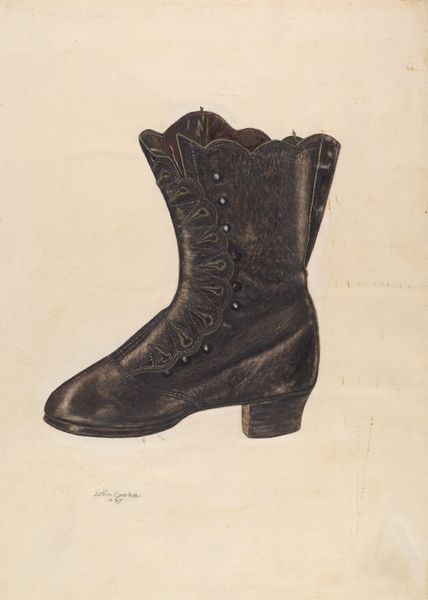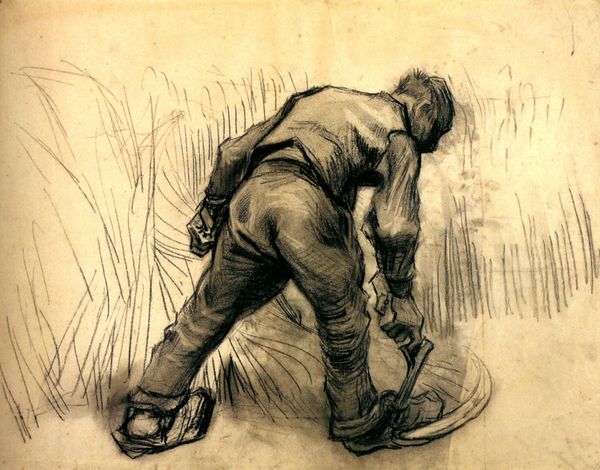
painting, oil-paint, impasto
#
painting
#
oil-paint
#
oil painting
#
impasto
#
folk-art
#
post-impressionism
#
realism
Dimensions: 45 x 37.5 cm
Copyright: Public domain
Editor: Here we have Van Gogh’s “A Pair of Shoes,” painted in 1886. It's an oil painting, and it has a sort of… heavy feeling to it, doesn’t it? The shoes feel so solid and worn. What do you see in this piece, looking at it from an art expert's perspective? Curator: Focusing purely on form, observe how Van Gogh employs impasto – thick applications of paint – to sculpt the shoes. This technique gives the painting a palpable texture. Note the muted color palette, predominantly earth tones, and how these choices impact the composition's overall visual weight. The interplay of light and shadow articulates the contours and defines volume, lending a sculptural quality to the mundane subject matter. Do you notice anything particular about the composition itself? Editor: I see that the shoes aren't arranged symmetrically. One seems to lean slightly, as if tired. Curator: Precisely. This asymmetry introduces a subtle tension within the static composition. Consider the negative space around the shoes. It is not merely empty canvas but an integral element that defines the subject and enhances the visual impact. How do you feel about his attention to mundane objects? Editor: I find it interesting. I wouldn’t have thought of painting something like shoes! It makes you really look at something you wouldn’t normally. Curator: Indeed. By elevating an everyday object through careful formal consideration, Van Gogh compels the viewer to see beyond the object’s utilitarian function. We find meaning in the mastery of representation and the careful arrangement of artistic elements. Editor: That’s a very interesting way of seeing it! I always thought there must have been some symbolism with them, but focusing on the art itself, the structure and textures, changes how you see it.
Comments
No comments
Be the first to comment and join the conversation on the ultimate creative platform.
